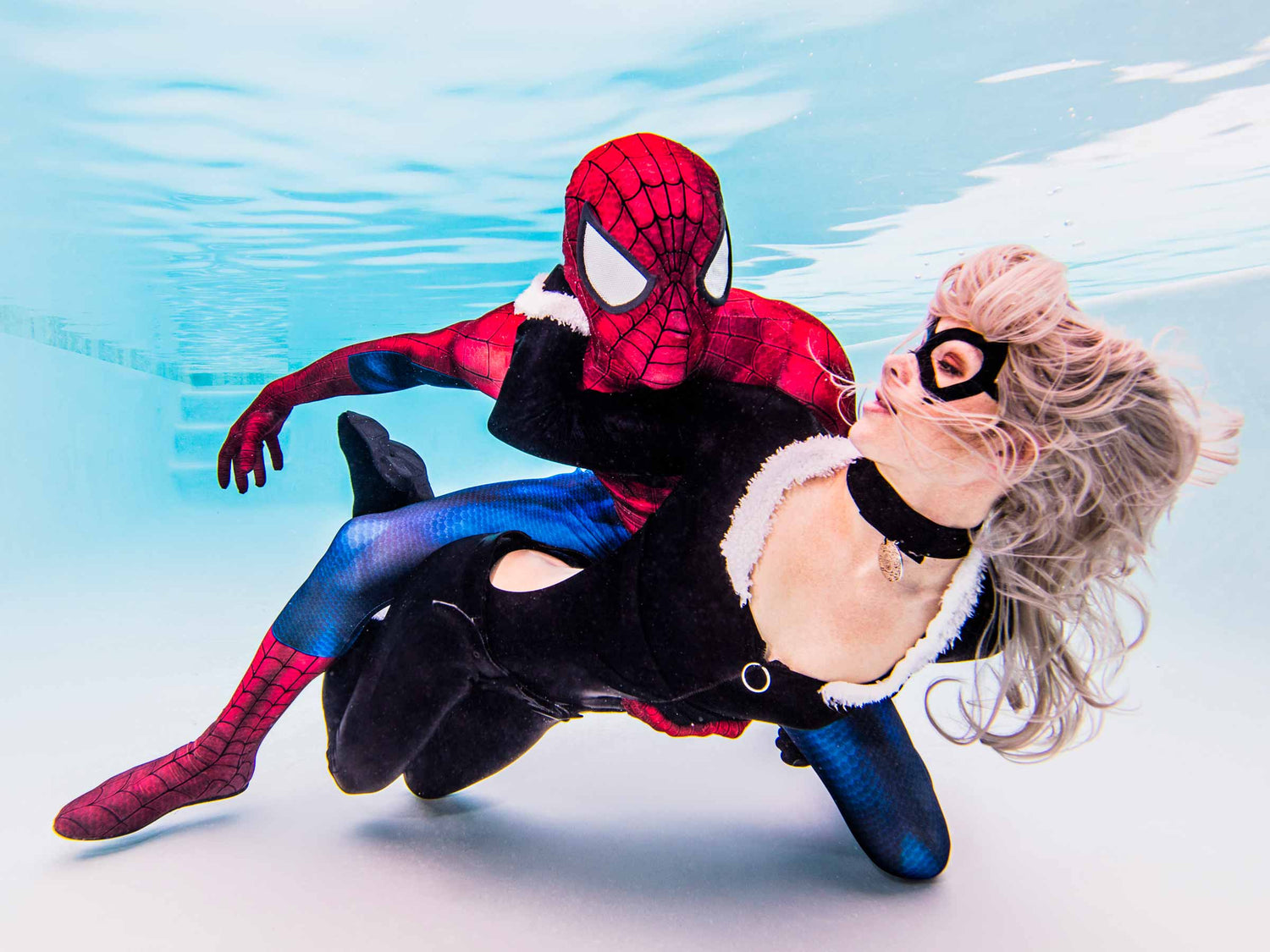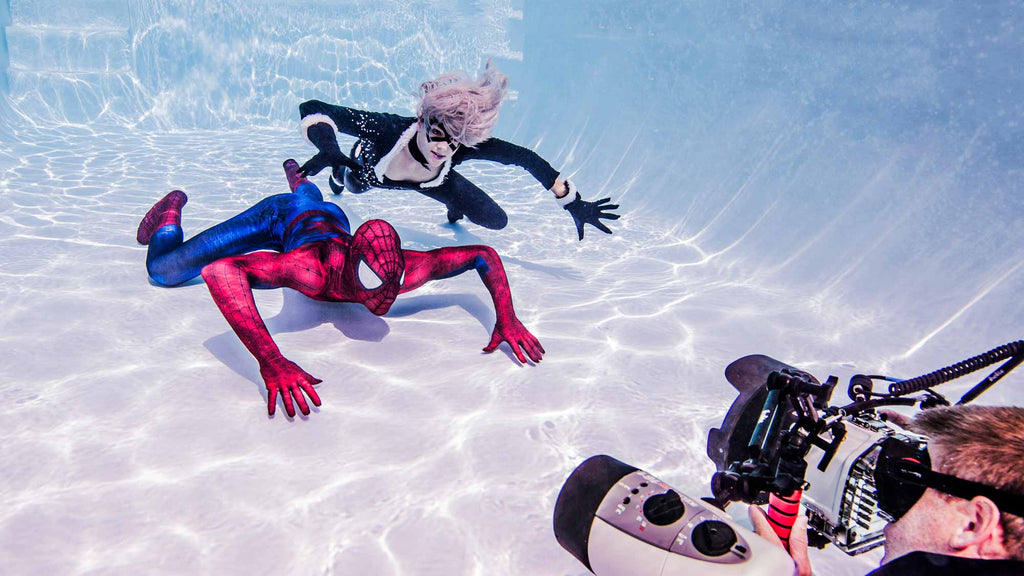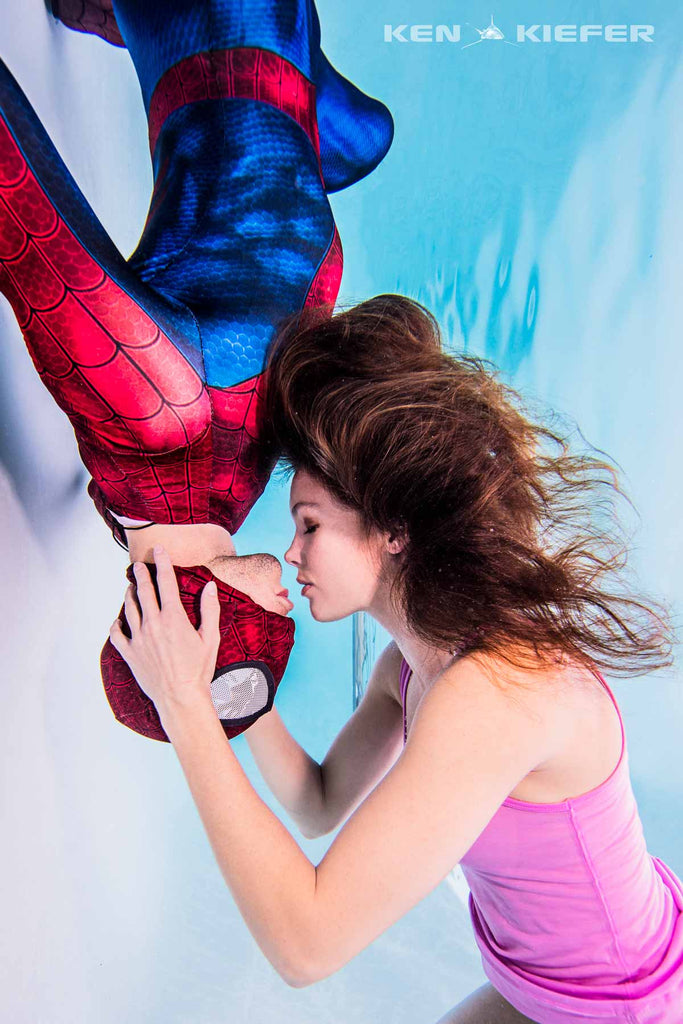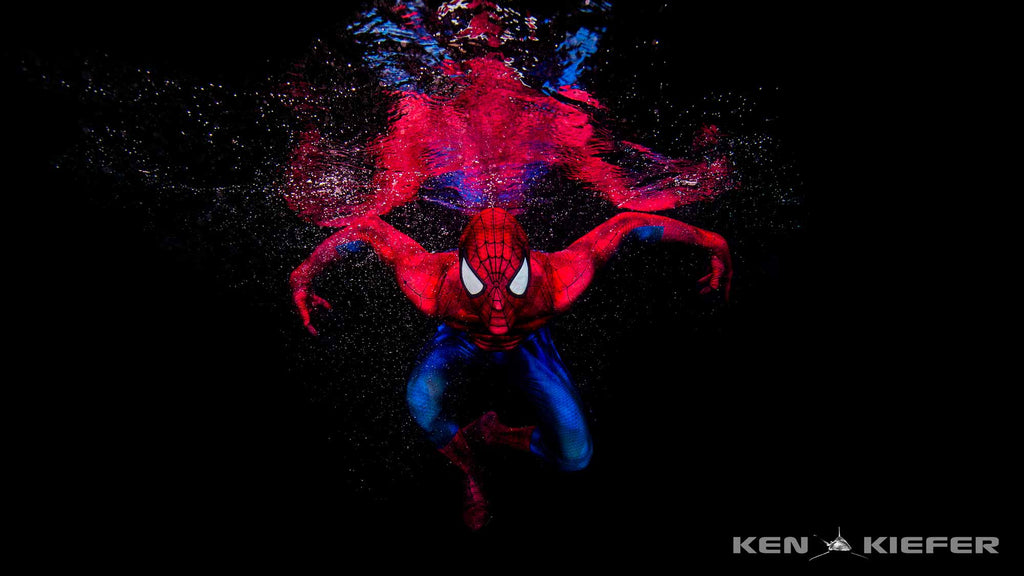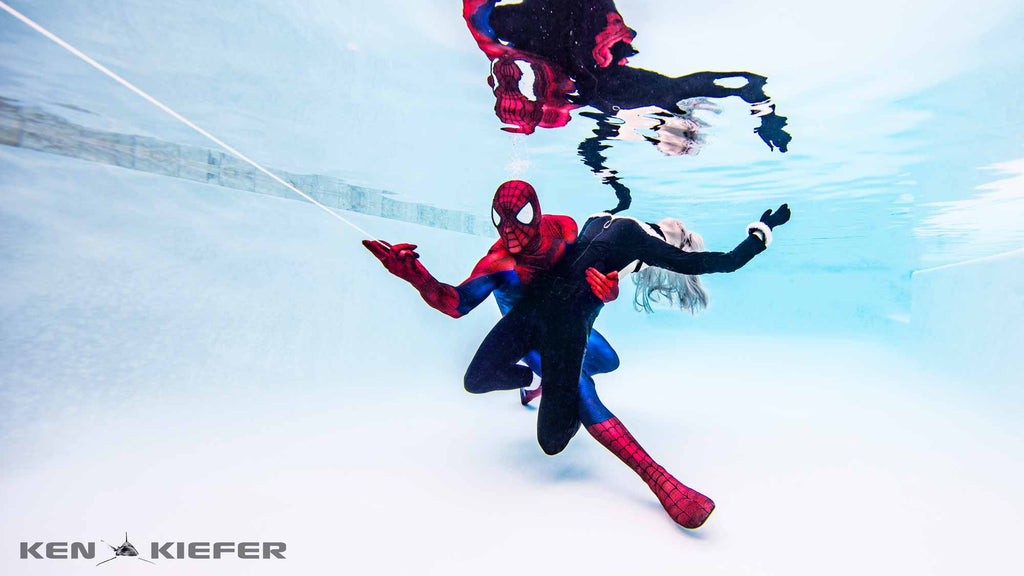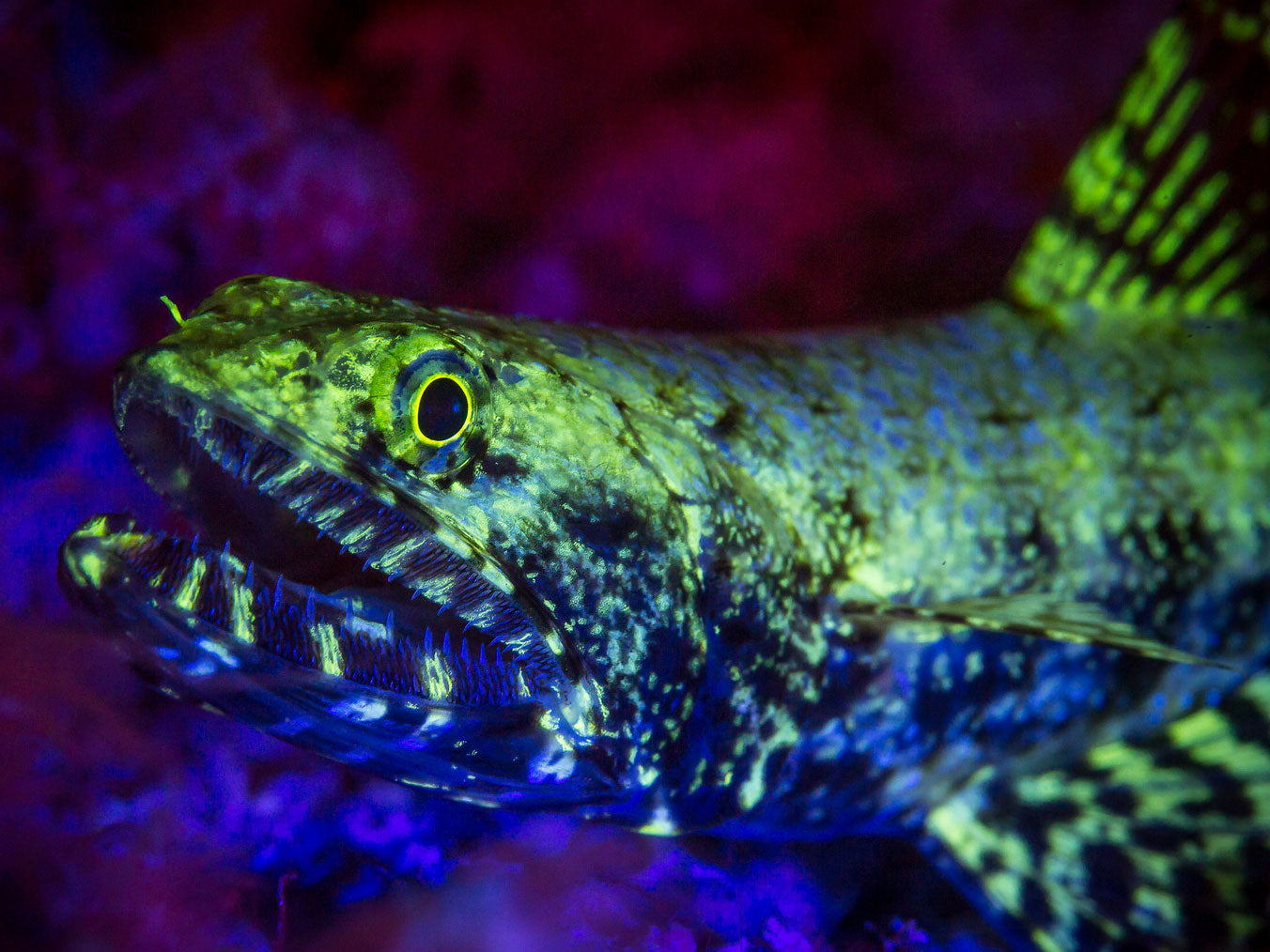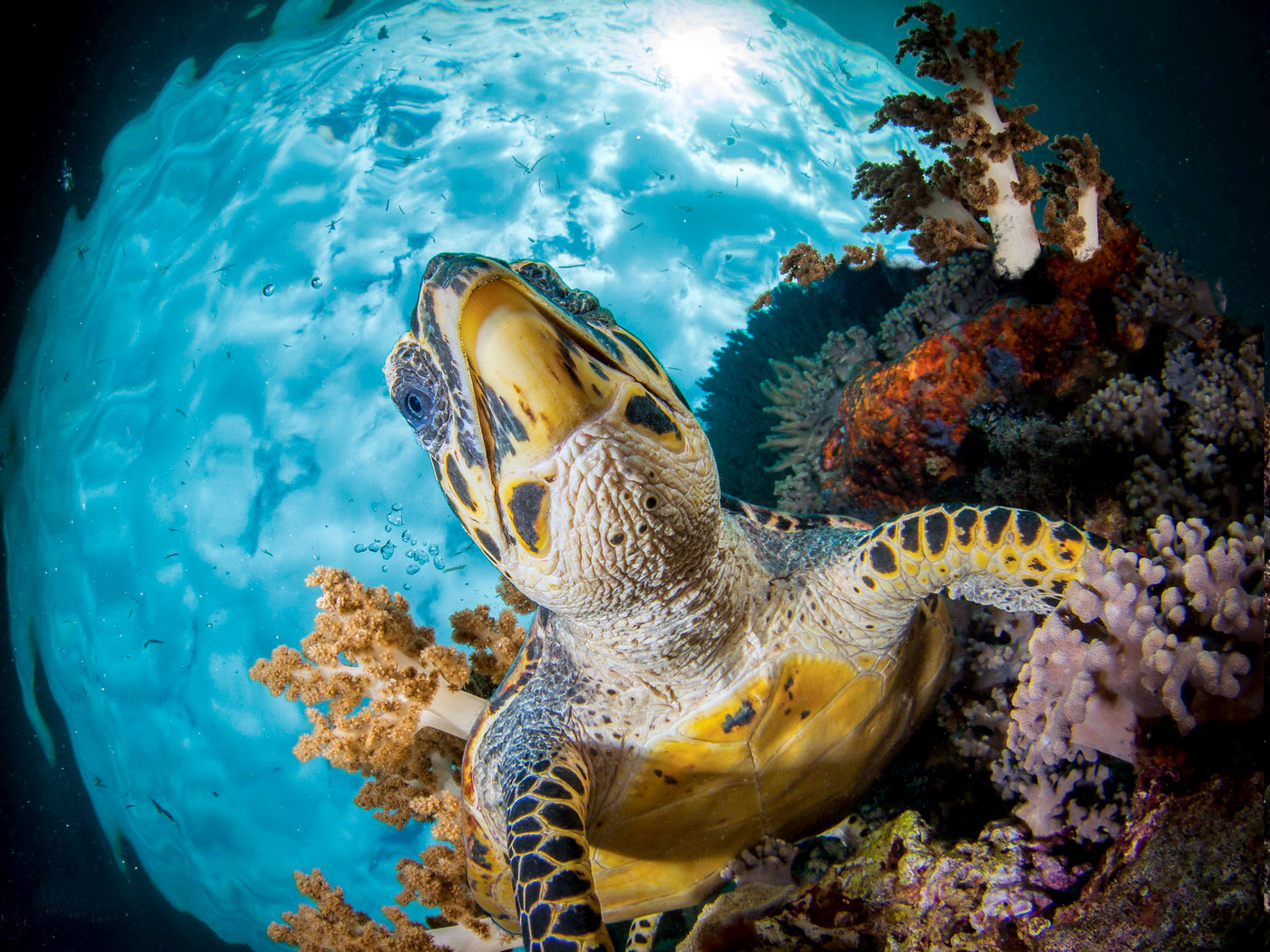We dive in with Ikelite Ambassador Ken Kiefer to find out how he captured these iconic images of some of his favorite superheroes underwater.
I've always been a big fan of superheroes. From reading comic books and watching the original Batman TV shows to the current crop of awesome movies, I can't get enough. So when I saw my friend's super realistic Iron Man costume, I immediately asked "Can that thing get wet?" The answer was "no" due to the electronics and a lot of metal content, but he said he had a Spiderman costume that he designed and created that could get wet! While we were planning what we could do underwater with this idea, he went ahead and made a costume for his girlfriend of one of Spiderman's frenemies called the Black Cat. Turned into a really awesome superhero shoot!
- Ken Kiefer
What camera, lens, and settings are you shooting here?
This was shot with my Canon EOS 5DS and Canon EF 11-24mm f/4L USM rectilinear lens. All were shot at ISO 100 and shutter speeds between 1/160 and 1/200. Apertures were generally ranging between f/5.6-f/18 depending on the sun's location and the look that we were trying to achieve.
Do you storyboard or do you shoot first, ask questions later?
I've never used a storyboard so far. We do have a shot list with ideas and reference pictures at the side of the pool to spark creativity and work on authentic action poses. Almost all of the initial ideas end up spawning a separate idea once we actually start shooting. Some things work well underwater, and others are fails. A lot of experimenting goes into this type of shoot.
Did the colorful costumes and bright ambient light make it difficult to edit these images?
We purposefully waited for a sunny day to make the costumes really pop in the manner of a comic book superhero. I then used several strobes on full power to even out the sunlight on the underside of the models.
What's the difference in approach when shooting outdoor pools vs. indoor pools?
Indoor pools are typically very poorly lit. I find it most visually appealing in these conditions to really light up the swimmer or model and pull them forward in the image.
Outdoors you get the dancing rays of sunlight, or play of light/dark on partly cloudy days that add some depth and texture to the background. I shot once during a giant downpour and got some really interesting images with the rain blasting down on the surface of the water.
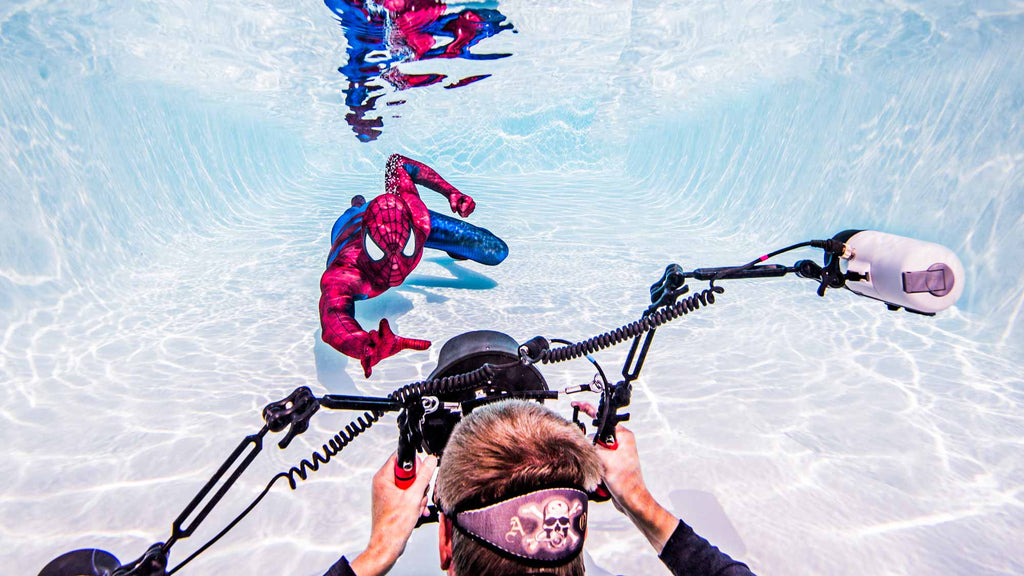
You're an accomplished underwater model photographer. What's your go-to lens for this type of shoot?
I always reach for really wide rectilinear lenses for model photography vs. the fisheye lenses that I would generally choose for sharks or large animals. The slight bow of the image with the fisheye can add unwanted curves to areas of the models. In the pool I'm often shooting either a Canon 16-35mm or 11-24mm.
Do you find shooting in a pool keeps you sharp and improves your photos when open water diving?
Like with any other activity or gear, repetition is key. Using my underwater housing and strobes as much as possible has really improved all aspects of my photography. I'm comfortable with every know and button on my equipment, plus having shot in so many conditions has helped to be prepared for a variety of situations.
Anytime I'm shooting with sharks or crocodiles, familiarity with the control set of the camera is invaluable. You cannot take your eye from a large predator, so being great friends with your housing helps you stay safe and still make the necessary adjustments to get the best image.
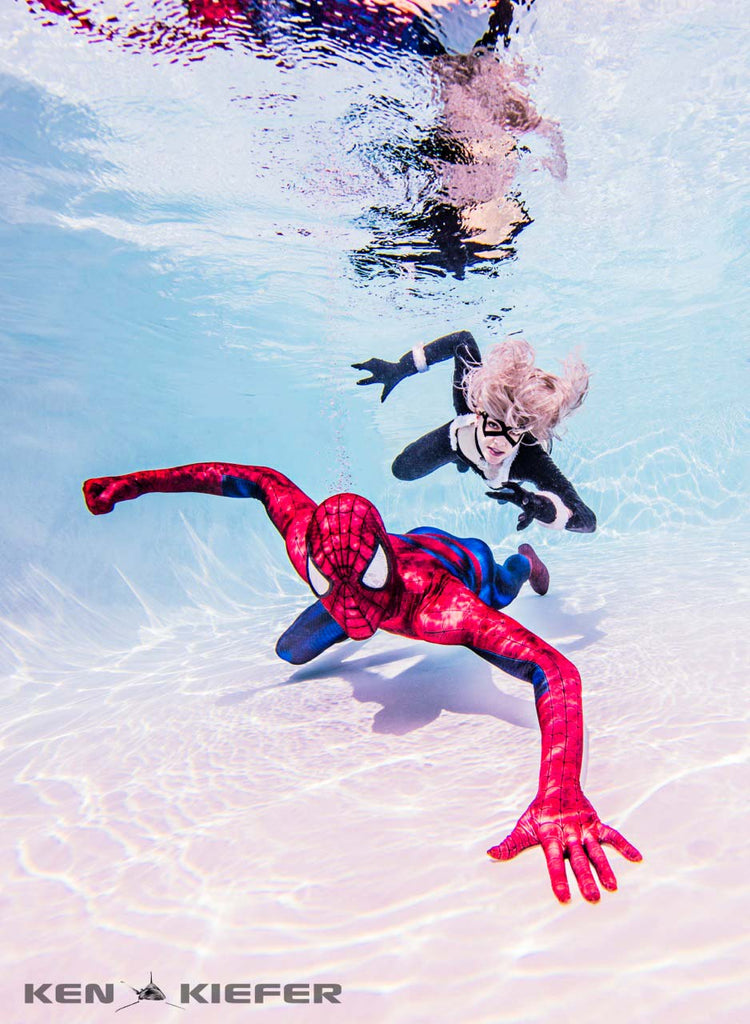
What are the requirements of a good underwater model?
It can definitely be difficult to model underwater. Throughout this 7-hour shoot, Alex struggled to breathe through the wet lycra in between shots. Normally the air part isn't that difficult, but almost everything else can be challenging underwater. Trying to convey natural facial expressions and body positions without appearing strained or tense requires a high level of comfort in the water.
It's really tough for anyone to keep their eyes open in a relaxed manner underwater. And holding your breath without chipmunk cheeks or an unnatural mouth position takes quite a bit of practice. My wife Kimber is invaluable at working with models since she has been on both sides of the camera. When we are shooting models, giving feedback both ways is very beneficial to the overall outcome.












